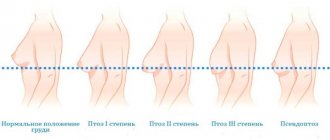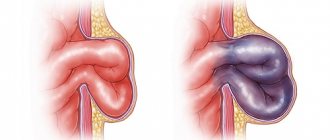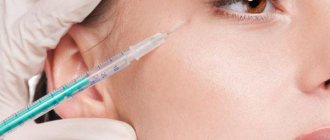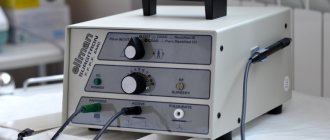General overview of the procedure
Mammoplasty is a surgical restoration of the size or shape of the breast by installing specially designed implants into the mammary gland.
The operation is performed under general anesthesia, the incision is made with a surgical scalpel.
To install a foreign body in the chest, it is necessary to form a pocket by separating the tissues from each other. Such an intervention does not leave its mark on the body and requires it to have certain reserves for rapid recovery.
The average rehabilitation period after mammoplasty lasts about 1-3 months, depending on the patient’s health condition. The full result can be assessed after six months.
Breastfeeding and silicone
After endoprosthetics, you should not become pregnant for about six months, otherwise the shape of the breast may change for the worse. Then there are no restrictions. You can breastfeed with implants, says the doctor.
“The operation does not damage the function of the mammary gland either anatomically or physiologically. To maintain your shape during pregnancy, you should wear comfortable compression garments throughout the entire period of bearing a child and while breastfeeding. It is also important to monitor your weight. Among my patients there are those who, after endoprosthetics, gave birth to three children, and their breasts still look good; they did not undergo a second operation,” says Olga Mishutkina.
Limits of postoperative norm
Throughout the recovery period, the woman must follow all the recommendations of the plastic surgeon. This will minimize all possible risks.
Of course, postoperative complications cannot be avoided completely. For example, about a week after the intervention the patient will experience noticeable pain
. Such discomfort is normal and can be eliminated with specially selected analgesics.
You cannot do without bruises and swelling - they are an acceptable consequence after mammoplasty if they are not accompanied by severe pain and an increase in body temperature.
To control the situation, it is necessary to regularly visit a plastic surgeon throughout the entire rehabilitation period.
What consequences should you be prepared for after surgery?
Any surgery in the breast area can cause various complications. You need to be especially careful when performing surgery aimed at breast enlargement. Conventionally, doctors divide all complications into 2 groups:
- those that occur immediately after the procedure;
- those that appear after 1 – 2 months.
The video below will tell you what consequences after surgery you should be prepared for:
Complications and solutions
In some cases, a woman notices that the implant in the breast is not positioned correctly or that any movement of the body brings unbearable pain.
Most complications develop in the first hours and days after surgery, but sometimes problems can appear months or even years later.
If discomfort occurs, it is important to consult a specialist in a timely manner in order to immediately begin treatment, if necessary.
Swelling
With normal recovery of the body, swelling disappears 3-5 days after surgery. This is the maximum period during which excessive hyperemia and tissue swelling should pass.
Edema is pathological if:
- there was a feeling of fullness;
- the skin around the chest is very red;
- local low-grade fever (skin is hot to the touch);
- body temperature increased;
- pain is not relieved by analgesics.
If such signs appear, you should urgently consult a doctor.
Excessive swelling is eliminated by physiotherapy and the application of cooling compresses in a hospital setting. It is not recommended to treat swelling on your own.
If the pathology is accompanied by the formation of pus under the implant, surgical treatment is prescribed.
Seroma
[collapse]
Seroma is the accumulation of lymphatic fluid in the subcutaneous fat. Such a complication can be caused by incorrect actions of the surgeon during surgery, implants that are too large for a certain breast, or non-anatomical tissue dissection.
When to suspect a seroma:
- the chest is very swollen;
- clear liquid is released from the unhealed scar of the swollen mammary gland;
- the pain is constant;
- the scar turned very red.
To eliminate serous fluid, drainage of the postoperative wound or its dissection is prescribed, followed by pumping out the biological material. Anti-inflammatory drugs are prescribed in combination.
Dangerous hematomas
A hematoma is an ordinary bruise, that is, subcutaneous hemorrhage.
It can appear due to injury to the unrecovered breast, improper stopping of bleeding during implant installation, and unqualified actions of medical personnel during the rehabilitation period.
Minor bruising is normal and will resolve on its own.
But in some cases, medical attention is required.
When consultation is needed:
- the hematoma is very extensive, it can spread under the chest or into the shoulder area;
- the symptom is accompanied by an increase in body temperature;
- the pain does not go away a week after the operation.
The first thing you need to do is stop the bleeding.
To do this, the specialist uses hemostatic agents, medications to lower blood pressure (if necessary) and the application of ice compresses.
In the future, extensive hematoma must be removed using tissue drainage.
Breast sagging
Sometimes sagging occurs long after surgery, as a natural process of tissue aging. But if we talk about complications, ptosis should be mentioned.
It can be artificial and pronounced.
In the first case, sagging occurs due to the installed implant being too small; in the second, tissue sagging is a feature of the body and its reaction to a foreign body.
How to determine ptosis:
- nipples are located above the average level of the chest;
- the mammary glands are strongly drooping;
- The distance between the collarbones and the beginning of the chest has increased.
Sagging mammary glands can only be corrected through repeated plastic surgery. The specialist must select implants that are larger in size and perform the operation based on the characteristics of the body.
Implant contouring
You are 18 years old? If yes, click here to view photos.
[collapse]
This complication most often develops in those women who have too thin a layer of subcutaneous fat. When the implant is installed not under the muscle, but directly under the mammary gland, its contours can be visible through the surface of the epidermis.
How to determine contouring:
- the contours of the implant can be seen visually and palpated;
- the chest protrudes unnaturally.
To eliminate this complication, the specialist will suggest the introduction of special corrective fillers. In some cases, lipofilling is indicated.
This procedure involves taking sebum from suitable areas on the patient's body and then transplanting it into the chest area.
Implant displacement
Implant displacement is another unpleasant complication after mammoplasty. Most often it develops due to improper selection of an endoprosthesis.
or illiterate actions of the plastic surgeon during the operation.
How to determine offset:
- the implant protrudes unnaturally to the side from its main position;
- The mammary glands look asymmetrical.
In the early stages, you can correct the situation by wearing a special corrective corset and a certain position of the body while sleeping. Also, when the implant is displaced, all physical activity is temporarily eliminated.
Inflammation, suppuration
One of the most dangerous complications is suppuration of the postoperative suture.
This can happen due to non-compliance with the rules of asepsis and antisepsis during surgery, the patient’s failure to follow the doctor’s recommendations, and improper treatment of the scar.
How does the complication manifest itself?
- the chest is very swollen and burning;
- in a short time the body temperature rises to high levels;
- the skin around the mammary gland turns red;
- pus is separated from the suture or nipple itself.
In the initial stages, inflammation can be stopped by taking antibacterial agents and intensive treatment of inflamed skin.
If the process cannot be controlled with medication, surgical intervention is prescribed.
Loss of sensation
During the first time after an incision in the skin, it loses its sensitivity. This is not a pathology and can be quickly eliminated with the help of physiotherapy.
But sometimes the patient does not feel the breast tissue or the nipple itself for a long time. This complication occurs due to incorrect actions of the surgeon during mammoplasty, which can damage the nerve network.
To combat the problem, the specialist prescribes a complex of physiotherapy and massage.
Capsular contracture
You are 18 years old? If yes, click here to view photos.
[collapse]
After installing the implant in the mammary gland, connective tissue begins to form around it. In normal condition, it does not exceed a tenth of a millimeter and the growth stops there.
.
But due to the characteristics of the body, this process can progress, which provokes the formation of capsular contracture.
How to determine a complication:
- the endoprosthesis and its contours can be felt by hand;
- breast deformation occurs;
- seals, dents or defects appear on the mammary gland;
- when touched, the patient feels pain.
The second stage of capsular contracture is eliminated with the help of physiotherapy, massage, the use of vitamin E and a complex of anti-inflammatory injections.
Stages 3 and 4 can only be corrected surgically.
To do this, the specialist completely removes the implant, removes the contracture and installs it again. Sometimes a smaller endoprosthesis is selected.
Rippling or skin ripples
Rippling, also called skin rippling, is a fairly rare complication after mammoplasty. This can happen due to the characteristics of the patient’s body, the incorrectly selected type and size of the implant, as well as the illiterate actions of the surgeon.
How to determine the appearance of skin ripples:
- predominantly, the defect is noticeable when the body is tilted forward;
- peculiar folds appear on the skin of the chest, similar to fingerprints.
Most often, breast lipolifting is used to eliminate the defect.
In some cases, a specialist may recommend replacing the implant with an endoprosthesis with a denser structure.
Removal and replacement of breast implants: all about re-endoprosthetics
“Will I definitely have to change implants in 10 years?”
The question is so common that I decided to devote an article to it.
Every year more and more plastic surgeries are performed in the world. According to the International Society of Aesthetic Plastic Surgery (ISAPS), their number increased by more than a million from 2014 to 2015 alone. At the same time, procedures to correct the size and shape of the breast are leading in demand: almost 1.5 million such operations were performed in 2020 alone. Despite its worldwide popularity, in Russia breast surgery is still surrounded by myths and prejudices. For example, many people by default perceive plastic surgery solely as breast enlargement (although there are a great many operations in the breast area) or seriously believe that implants explode on an airplane.
Let's figure it all out.
According to world statistics, almost 20% of patients undergo repeated operations during the first 10 years after mammoplasty. Many people think that repeated operations are carried out mainly to correct some terrible complications or mistakes of plastic surgeons. In fact, such cases are the rarest reason for referral - about 3-4%. Even a quick glance at these figures should inspire confidence, not worry or fear, because it means that four out of five women have been enjoying all the benefits of beautiful breasts for well over 10 years. Modern implants themselves do not require replacement - manufacturers give them a lifetime quality guarantee.
Why do women undergo revision breast surgery?
The main reasons for repeated breast surgery:
- Replacing old implants with models of a different size or with more modern products from another manufacturer
- Repeated breast surgery after childbirth (with or without replacement of implants - according to indications)
- Removal of breast implants at the request of the patient (wants to return to the original appearance that was before the operation) - in my practice this has only happened once.
- Correcting the results of unsuccessful breast surgery:
a fairly large group of defects that require repeated surgery to correct. These include: asymmetrical location or displacement of implants, their protrusion or collapse, position that is too high or low, the appearance of folds and wrinkles on the chest, obvious palpation of endoprostheses through soft tissue, the formation of a double breast contour, etc. (with or without replacement of implants - according to indications)
- Postoperative complications
- capsular contracture (implant replacement is always required);
- contouring the edges of implants or “waves” on the chest (most often, replacement of implants is required);
- rejection or infection.
In all of the above cases, surgical correction can give an excellent result that will completely satisfy the patient.
Let's look at each point in detail:
Regarding points 1-3: Dissatisfaction with the aesthetic result of the primary operation
Most often, this is caused by quite obvious problems, for example, implants that are incorrectly selected in size or shape, but sometimes it is simply a matter of subjective dissatisfaction with certain parameters of one’s new bust.
The need to correct changes in the appearance of the breasts caused by sudden fluctuations in weight, pregnancy, age-related factors, etc. Also, one cannot ignore the fact that after a certain time after endoprosthetics, the shape of the breast may deteriorate. This can happen after 10-15 years, sometimes even more, but it happens almost inevitably: under the influence of gravity, the implants shift, stretching the breast tissue, and a new visit to the plastic surgeon will be needed to restore its former shape.
The patient’s desire to enlarge her breasts by 3-4 or more sizes. Technically this is possible, but plastic surgeons consider an increase of no more than 1-2 sizes in one “approach” to be optimal. In this case, it is possible to avoid breast deformation, overstretching of soft tissues, the appearance of stretch marks, complications with the spine due to significantly increased weight and a shift in the center of gravity.
Regarding point 4, read my article “How to choose a plastic surgeon” and find a truly experienced surgeon in mammoplasty (sometimes they also do operations on promotions)))
Everything is clear here, but point 5 requires professional clarification. Plastic surgery is a surgical intervention on the body and, as with any operation, postoperative complications may occur (probability 3-4%)
Removal of breast implants is necessary if complications of mammoplasty develop:
- Inflammation
- Infection
- Bleeding
It is important to note that we are talking about inflammation/infection in the area of the implantation pocket. Minor inflammation of the postoperative scar does not require surgical revision. In case of damage to deep tissues, as well as in case of implant rupture due to chest trauma, removal of endoprostheses is mandatory. Repeated mammoplasty is performed only after complete restoration of the gland.
Removal and replacement of breast implants
Removal with simultaneous replacement of implants is indicated for the development of obvious aesthetic defects after primary mammoplasty. Such defects include:
- Capsular contracture
- Breast deformation and asymmetry due to implant displacement
- Explicit contouring of the implant
- Formation of a double breast contour
Contouring of the implant and the formation of a double contour of the gland can result from the installation of too large implants. To avoid this, surgeons recommend enlarging the bust in two stages with re-endoprosthetics. Pregnancy, lactation, rapid weight loss and age-related changes in soft tissue can also cause a deterioration in the aesthetic value of primary mammoplasty.
There is always a minimal risk of developing capsular contracture , but with the advent of new generation implants with a textured shell, this complication is becoming less common. Displacement of the implant, which leads to deformation and asymmetry of the breast, can be caused by both a violation of the arthroplasty technique and improper behavior of the woman during the rehabilitation period.
And finally. The implants are strong enough that you can do any sport you want: scuba diving, mountain climbing, even boxing. The main thing is not to do this immediately after surgery (the recovery process can take from two weeks to six months). In my practice, complications occurred when women flew to sea a month after the operation. We swam, sunbathed, and played active sports. Of course, you really want to show off your new forms as quickly as possible, but following the recommendations of the operating surgeon is the key to successful recovery after surgery and your health in general. When exactly you can return to an active lifestyle and sports - your doctor will tell you - this is individual. By the way, the strength and “stress resistance” of implants was tested not only by manufacturers, but also by ordinary people: look online to see what will happen if you hit a breast implant with a hammer, “cook” it in the microwave, or pour boiling water over it. Hint - nothing will happen!
0 SHARE
FacebookVkOdnoklassnikiTweetWhatsappGoogleSkype
Preventive measures
To minimize the risk of possible complications, you will first need to take a responsible approach to choosing a plastic surgeon.
The specialist must have the appropriate qualifications, have a diploma and certificates confirming regular training.
This will eliminate problems that most often arise due to incorrect actions by the doctor during mammoplasty.
What can be done for prevention:
- wear shapewear for the entire recommended time (1-3 months);
- reduce physical activity to a minimum;
- do not lift heavy objects;
- carefully treat the seam and chest area with antiseptic agents;
- do not injure the mammary glands;
- regularly visit a doctor until the tissues are completely healed;
- During the entire rehabilitation period you should not drink alcohol or smoke;
- Take antibacterial agents after surgery as prescribed by the doctor.
With the right actions during the rehabilitation period after mammoplasty, most serious complications can be avoided.
Of course, some problems may arise due to the individual characteristics of the body. But a good doctor will definitely warn about all possible troubles, based on the medical history of a particular patient.
The video provides additional information on the topic of the article.
Any breast surgery carries a certain risk. Many nerve endings are concentrated in this area: there are both muscles and gland tissue, ducts and ligaments. Whatever the purpose of the surgical procedure, it is worth considering possible complications. The most common ones are known to almost everyone, but rare side effects should also not be forgotten.
Angelina Jolie is not the first
June 22, 7:27
“We are not cutters”: a plastic surgeon - about the request “like Jolie” and the difference in price
Why going to Moscow for new breasts is no longer relevant, what are the features of male plastic surgery and what you definitely won’t be able to change about yourself
About 10 years ago, Angelina Jolie had her breasts removed and implants inserted for preventive purposes - she had a very high risk of developing cancer. This operation - subcutaneous mastectomy - has been performed in Barnaul for several years now.
“Angelina Jolie once drove everyone crazy with this operation. In fact, she was not the first. For example, in Barnaul such operations have been performed for more than 20 years,” the specialist commented.
Such operations are performed for certain indications: a high risk of inherited cancer, the presence of multiple benign tumors, and even treated distant cancer in the adjacent breast.
“There are times when a patient, who has already had one breast removed due to cancer, asks to have the second one removed out of fear. This puts a lot of moral pressure, and women want to play it safe,” explains the doctor.
We do not perform such operations free of charge within the framework of compulsory medical insurance.
Common Complications
The most common general surgical complications are:
- hematoma;
- seroma;
- scar formation.
Hematoma
is dangerous if blood gets into the surgical pocket near the implant. If the accumulation is localized next to it, intervention is not required. To prevent the formation of such hematomas, it is important to prepare the cardiovascular system and blood coagulation system for surgery in advance, as well as follow a number of rules during the operation.
Seroma
often occurs in two cases: if the patient has problems with the lymphatic system or if the doctor made a mistake and did not perform the procedure very well. The accumulation of serous fluid is drained, but in some cases also does not require additional treatment.
Infection
is one of the main dangers that await a surgeon’s patients.
The development of inflammation can be life-threatening. As a rule, such a complication becomes a consequence of medical negligence or non-compliance with hygiene and dressings after surgery and discharge from a medical institution. A similar complication is skin necrosis
, which can occur either due to infection or due to a violation of the blood supply to the tissue area. This phenomenon may be caused by too much weight of the dentures. Also, in some cases, after surgery, numbness may be observed, which can last for several weeks or months, but then disappears without a trace, in this case we cannot talk about complications, this is a possible variant of the postoperative course.
Keloid scars
not so dangerous, but this is a serious aesthetic defect that is not easy to eliminate.
Their appearance is associated with the characteristics of the skin and tissue healing mechanisms. It is very important to tell your doctor about scarring problems in advance so that you can choose the best method for performing surgery on such an important area of the body as the breasts.
In this case, healing Cure without visible consequences is possible in the early stages of keloid development.
Complications after surgery
Complications after surgery are not common, but you need to be aware of them.
Capsular contracture.
During the healing process, capsules are formed. If they become too thick and grow around the implant, then this is already a pathology. Painful sensations develop and the breasts become deformed. If the prosthesis is made from a textured (rough) surface, the risk of this adverse reaction is reduced.
Double convexity.
The complication is caused by displacement of the implant under the breast fold. It is possible that this phenomenon will go away on its own, but re-operation may also be necessary.
Seroma.
It develops when excess fluid accumulates between the capsule and the prosthesis. Typically, accumulation occurs in the “pockets” of the implant. The process is accompanied by an inflammatory process, disturbances in the functioning of the endocrine system, and decreased immunity.
Rejection of breast implants.
There is always a risk of rejection, since implants are a foreign body in the human body. It has been proven that rough dentures almost never cause this reaction. That is why almost all modern companies produce such implants.
Rare complications
Complications related directly to implants are much less common. Implant displacement
It is not too rare, but mostly when referring to surgeons with low qualifications.
This phenomenon is associated with improper strengthening of the inframammary fold structure. Asymmetry
is as common as misalignment. This is a clear sign of a specialist error. The occurrence of such an effect may be associated with improper healing, as well as damage to the implants, so the patient should carefully monitor the changes occurring after the operation.
Violation of shell integrity
and its rupture are the rarest complications. They are associated with the low quality of the products themselves. In rare cases, such situations arise due to medical errors. The rupture can lead to visual defects and may remain undetected for many months. This situation does not pose a threat to life and health, since the gel inside is not fluid and looks like marmalade. But in some cases, rupture of the membrane can lead to chronic inflammation and, as a consequence, capsular contracture. In this situation, a planned replacement of the implant is required.
Breast implant deflation
, that is, leakage of its contents is unlikely today and is extremely rare; flowable gels are not used today to fill implants. Such complications are most typical for operations using implants filled with saline solutions. If the integrity of such implants is compromised, the saline solution is simply absorbed by the body without any harm.
An even rarer type of complication is extrusion
installed prosthesis. In fact, the capsule falls out through the open wound. Only 0.1 percent of women undergoing surgery encountered this problem, and most of them had extremely large implants installed.
is a complication that is almost impossible to prevent in advance or predict. It is excessive scarring of the internal tissues around the implant, forming a hard “pocket” that deforms the breast, changes its structure and even deforms the prosthesis. Only a repeat operation can correct the situation. But, fortunately, such complications are rare.
Difficulty breastfeeding
After implantation, at the current level of development, plastic surgery is rare. The chance of irreversible changes increases only if the nipple has been manipulated. This is sometimes necessary with an inverted nipple. But this procedure partially damages the ducts and is therefore performed strictly for women who have already completed breastfeeding and are no longer planning pregnancy.
The desire for ideal forms is natural for any woman. When what nature has given is not enough, and physical exercises, cosmetic procedures and other methods are ineffective, mammoplasty and other achievements of plastic surgery come to the rescue.
Breast augmentation is one of the most popular plastic surgeries, which allows you to give the bust the desired volume and give a woman self-confidence. Quite often, immediately after the procedure, the implants are located above the natural level. This unpleasant temporary effect usually occurs after submuscular placement of silicone inserts. But by the end of the postoperative period, the bust should “sit” in place. It usually takes four to six months for the breasts to return to their normal position. During this time, the pectoral muscles relax, the implant lowers, the lower part of the mammary gland acquires natural roundness, and the upper pole loses its unnatural fullness.
Which method of diagnosing a rupture of the breast implant capsule to choose: MRI, CT, ultrasound
What will a breast ultrasound show if an implant ruptures?
- Sometimes a symptom of "tongue"
- A round gyrus formation, which has emerged from the cavity of the prosthesis and usually kicks in the upper pole of the prosthesis
- A hyperjugous rim is often visualized.
What mammography images will show if a breast implant ruptures
- A high-density formation located in close proximity to the prosthesis.
In what cases is MR mammography performed when a silicone implant ruptures?
- Sometimes a “tongue” symptom: a torn, collapsed inner and outer shell of the prosthesis with a clearly defined fibrous capsule, the cavity of which is filled with silicone
- Usually clearly demarcated inclusions of prosthetic material in the parenchyma, located next to the prosthesis (usually in the superior quadrant) * Peripheral contrast enhancement may be observed.
Unsynchronous lowering of implants
It is quite unpleasant for a woman to later discover that she looks asymmetrical, since one of the implants turned out to be higher than the neighboring one. This occurs when the silicone insert on the dominant side is lowered more slowly. This is observed due to the more pronounced volume of the pectoral muscles on the corresponding side in “left-handed” and “right-handed” people. The problem resolves itself during the first few months of the postoperative period.
Unnatural placement of the bust and excessive volume become even more noticeable due to swelling after surgery, especially pronounced when the surgeon places the implant submuscularly.
Saline implant ruptures
One of the advantages of saline breast implants is that the rupture can be detected visually. The rupture may present a small "leak" that may go unnoticed for a week or even several months. However, a typical saline implant rupture is noticeable within a few hours. Breasts with a ruptured implant may appear droopy, there may be loose skin, ripples around the upper part of the breast, etc. Unlike silicone, the saline solution leaves the shell of the implant and enters the body. Saline solution is not harmful to the body.
How to speed up the process?
To ensure that the implants fall into place as quickly as possible, surgeons recommend using a relaxing massage and exercises. Light pressure on the pectoral muscle along the edges of the implant is especially helpful, but care must be taken to ensure that the silicone insert does not move. You can perform massage movements three to four times a day during the first month of rehabilitation.
Wearing compression garments helps to quickly normalize blood circulation and eliminate swelling, which helps implants heal in the desired position.
Compression underwear helps your bust fall into place faster thanks to two fasteners. One of them is located under the chest, the second - above. The top clasp can be moved to the back to reduce pressure on the silicone insert.
For the entire rehabilitation period, you should forget about bras with push-up or hard wires, which interfere with the normal healing of the stitches and the lowering of the breasts to their proper place.
Mammoplasty with surgical installation of implants is the most effective method of breast correction. But do not forget that with any surgical intervention there is a possibility of complications. Each operation requires the attention of specialists in the postoperative period and monitoring of the patient’s condition.
Common indications for breast implantation, changes in their size and shape are: previous cancer with removal of the mammary gland, loss of shape after lactation or weight loss, congenital or acquired asymmetry.
Read in this article
Indications and contraindications
June 24, 7:27
Five years wearing a mask: one beauty procedure ruined the life of a woman from Barnaul
The woman’s problems began almost 10 years ago, when she came to a beauty salon in the hope of regaining her youth. Now she only leaves the house wearing a mask.
Some conditions, such as cysts (fibrocystic disease), may even disappear after breast augmentation surgery. It works as follows: most often, cysts form after breastfeeding, during which the milk duct expands. If a doctor places an implant under the breast tissue or under the pectoral muscle, it begins to put pressure on the glandular tissue. As a result, the milk duct narrows and the cyst can “evacuate” on its own.
Cysts, even multiple ones, are not a contraindication for endoprosthetics, says the doctor.
“Hospital No. 11 operated a mammology center for a long time; we were the first in Barnaul with such a profile, and we have our own research. They say that breast cysts decrease after implant installation,” says the specialist.
As for fibrosis - benign tumors - they are also not a contraindication to surgery. After cancer is ruled out, the tumor is removed during surgery and then implants are placed.
What complications are possible after implant placement?
Despite patient concerns, complications are quite rare.
According to statistics, one of the safest operations is mammoplasty: complications develop only in 2-3% of cases.
All problems are then divided into general surgical and specific.
The first include:
- hematoma;
- seroma;
- development of inflammation;
- scar formation.
Specific complications are as follows:
- formation of contracture;
- decreased or loss of nipple sensitivity;
- deformation of the prosthesis;
- implant rupture.
For a complete picture of the mechanism of complications, it is worthwhile to dwell on each in more detail.
General surgical complications
Hematoma
The formation of a hematoma after mammoplasty is possible as a result of the accumulation of blood near the implantation pocket, or directly in it.
The first case does not require any treatment; such a hematoma resolves on its own within a few days. The situation in which blood has spilled into the cavity of the pocket is more serious. In this case, drainage is performed to remove accumulated fluid.
To minimize the incidence of this complication in the preoperative period, it is important to carefully assess the state of the cardiovascular and coagulation systems of the body.
Seroma
The occurrence of seroma after mammoplasty is caused by damage to the lymphatic vessels in the area where the implant is installed. The volume of serous fluid spilled into the breast after mammoplasty may vary: a large volume requires puncture or drainage.
It should be mentioned that with the proper qualifications of the surgeon and his attentive attitude, a complication in the form of seroma does not arise.
Development of inflammation
The danger of infection arises when the rules of asepsis and antisepsis are not followed, or when the patient’s immunity is not sufficiently strengthened. Treatment of the inflammatory process, often manifested as wound suppuration, involves the use of antibacterial therapy. Patients with frequent infectious diseases or weak immunity are usually prescribed antibiotics in the postoperative period.
Scar formation
They try to predict the possibility of formation of scars and keloids in the postoperative period in advance; the predisposition to them is clarified when collecting an anamnesis. If the patient notices the habitual formation of scars after minor injuries, then the specialist is obliged to warn her about such a complication after the intervention. If a scar forms at the site of the surgical incision, laser or mechanical excision is used.
Specific complications
Contractures
The formation of contractures occupies a special place among the consequences of mammoplasty. It is quite rare. To form a contracture or fibrous ring around the implant, in the preoperative period and during the intervention, the following mistakes must be made:
- disproportionately large prosthesis;
- small implant pocket;
- inadequate hemostasis (stopping bleeding);
- predisposition of body tissues;
- incorrectly selected operational access;
- insufficient qualifications of the selected specialist.
Situations where replacement of a prosthesis is required due to the formation of a fibrous ring occur extremely rarely. More often, the contracture remains externally invisible and re-intervention is not required.
Loss of nipple sensation
A complication that is caused by damage to the nerve endings in the nipple or areola area. The frequency of occurrence is relatively low. It is important to distinguish true loss of sensitivity from false one. The latter is a temporary condition that occurs quite often and does not require any treatment.
Deformation of the prosthesis
Implant deformations primarily include its displacement in the implantation pocket. This may be due to insufficient qualifications of the surgeon performing the surgery. During manipulations, a specialist may lose sight of an important stage: strengthening the inframammary (submammary) fold. If such a mistake was made, then displacement of the implant after mammoplasty is inevitable.
Treatment of this complication consists of a repeat operation, which eliminates the above-described omission.
Implant rupture
The rarest. Manufacturers have made great strides in creating high-quality implants, reducing the number of ruptures to zero. In addition, the materials from which prosthetics are made today guarantee their complete stability, increasing the level of safety for women.
Why do implants rupture?
Implant rupture is the result of strong physical impact. For example, a blow. However, implant replacement is not always required urgently.
“One of my patients had an implant rupture after a fall from a height, but the connective tissue capsule that forms around the implant during the rehabilitation period remained intact. In addition, modern implants do not leak and do not saturate tissues. Therefore, we decided to wait until the fall,” the doctor commented.
A connective tissue capsule is formed from your own connective tissue around the implant during two months of rehabilitation. The body “envelops” the foreign element like a dense bag. This capsule is thin, but quite durable.










